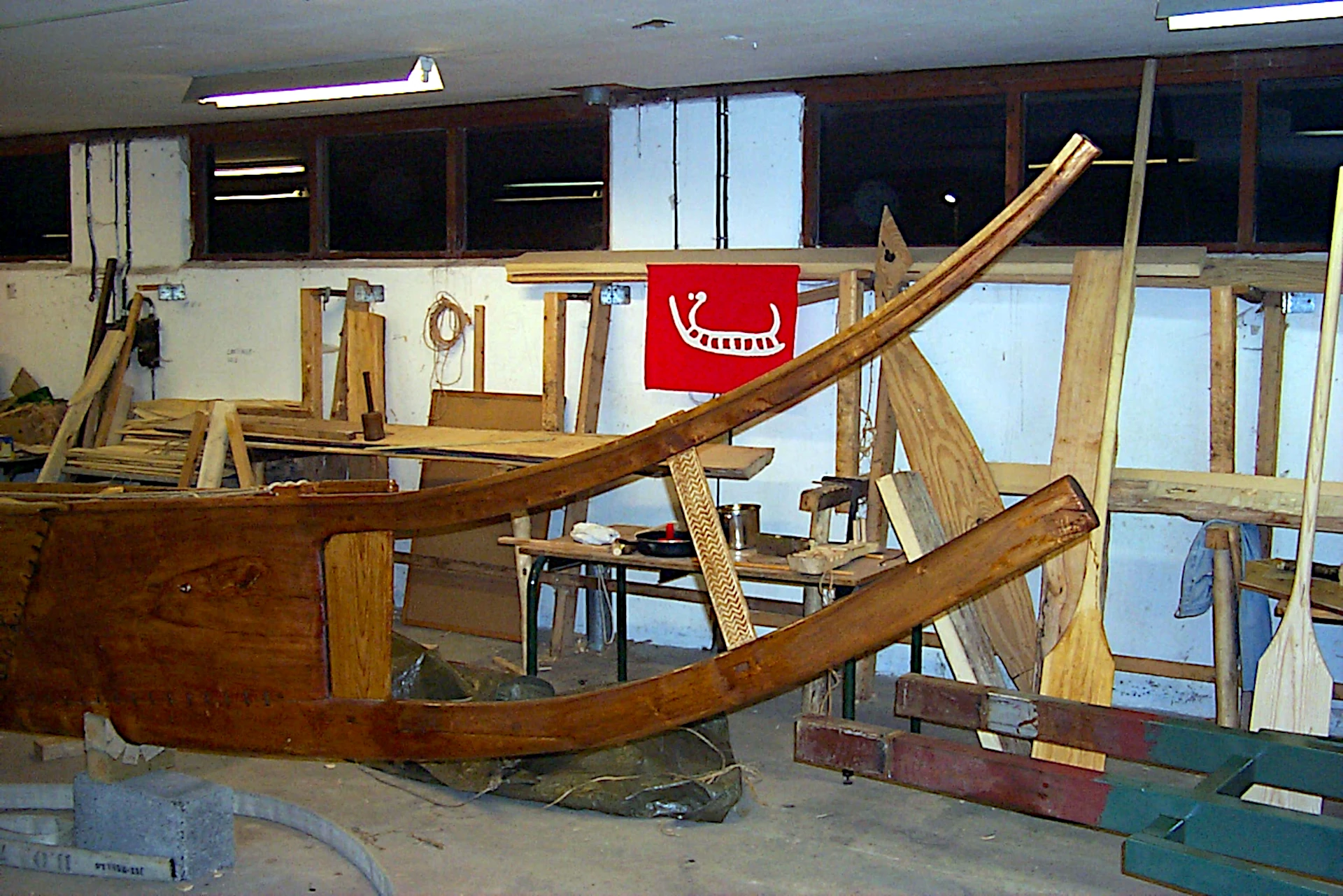For the four horns (two keel horns and two railing horns), after some searching we found some curved branches from a couple of local lime trees. The find had not indicated the curvature of the horns, as only a few pieces of the horns had been identified. After looking at the rock carvings from the early Iron Age (the Litlesby carvings), we chose what we considered to be aesthetic forms with a certain dramatic effect. An important guideline was that the horns should follow each other, i.e. be ‘parallel’ to illustrate rock carvings from the Early Iron Age.
The cross-section of the keel horns were ellipses and the connection to the bottom plank extension was a tongue-and-groove joint, secured with two rectangular oak pegs. This joint was well documented in the find. Together with the carved thwarts, it is an illustration of the superior wood technology mastered by our predecessors.
The cross-section of the railing horns was T-shaped, so that the shape of the railing continued into the horns. As mentioned earlier, there was no indication of the joint in the find. We chose a tongue-and-groove joint similar to the keel horn. It was slightly more complicated due to the T-shape of the cross section.
During the excavation, a highly decorated oak board, 12 cm wide and 1.5 cm thick, was found at each end of the boat. These had been placed by Johannessen as outer locking boards that connected the keel and railing horn. The boards stood in a recess in the keel horn and ran through a slot in the railing horn.
However, a piece of decorated oak was also found that could have been an outer locking board, shaped with a shield-like plate. We decided to let the front, outer locking board contain this shield-like plate. In doing so, we also illustrated some of the younger rock carving boats that had such shield-shaped locking planks. The aft, outer locking plank was retained as a rectangular board. Both were decorated with zigzag patterns in accordance with the find.
The outer locking boards were attached to the keel and railing horns with transverse square tabs.





